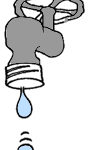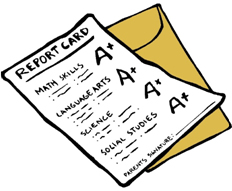By Doc Larrick
| People chit-chat about a mish-mash of subjects as they dilly-dally. Charm bracelets jingle-jangle, roads zig-zag, rain goes pitter-patter. Knick-knacks might teeter-totter at the edge of a shelf. Politicians may criss-cross the state and flip-flop on their issues. |  |
 |
Language has fun with its sounds, and there is a whole classification of words that do this sort of repeated, doubled play on a word. They are called reduplicatives (as in re-double), and they imply a repeated or continuous action, often a sound (tick-tock, click-clack), often aimless or humorous. Have you ever shilly-shallied? What you were doing is asking yourself over and over “Shall I or shall I not?” |
A related type of word formation is the frequentative, a word that means doing something over and over. Many languages have a morpheme (a meaningful piece of a word) built onto a root word to show that the action is done again and again.
| For example, in English, the suffix –le on a verb root sometimes has the effect of repeated action: consider words like babble, cuddle, drizzle, fizzle, giggle, haggle, jiggle, nibble, rattle, shuffle, tickle, and scores of others (you’ll think of more as you try to fall asleep tonight). |  |
Think about the repeated action involved with stars that twinkle or thumbs being twiddled and babies being dandled.
 |
With many such words, the original verb root has become obscure, but there are some that can be figured out: a dribble is a constant drip, to crumble is to break into lots of crumbs, to scribble is to write (scribe) over and over, to snuggle is to keep trying to get snug. |
 |
Just picture in your mind how the suffix –er creates repeating action in such words as bicker, flicker, mutter, shudder, shimmer, or glitter. |  |
Again, the original English root is often obscure, but you can still detect the root in some words, such as flutter (to float repeatedly) or slither (to slide back and forth). One of the most common forms of communication in current society is the tweet. A tweet is one message among all the scattered, repeated, silently noisy twitter that gets muttered, blabbered, sputtered, stuttered, and stammered across the air frequencies!




